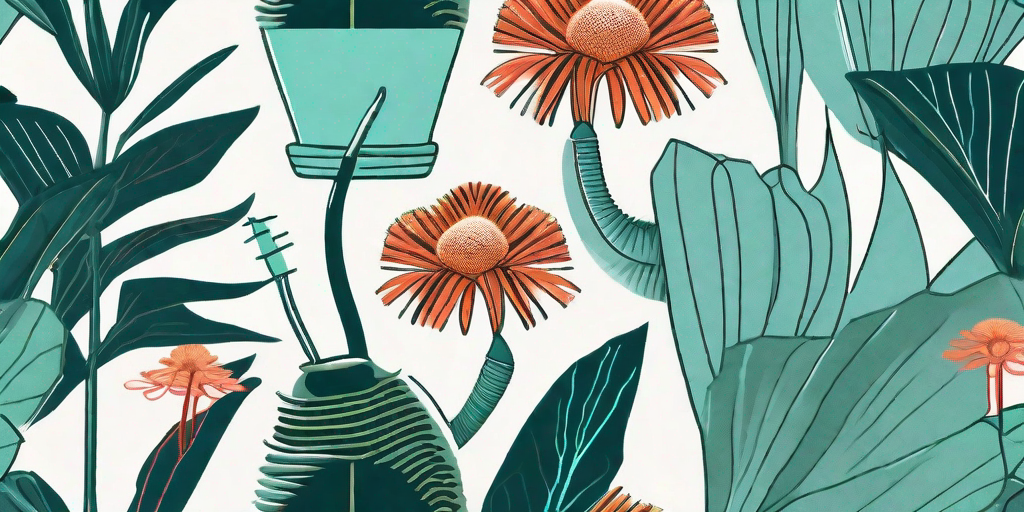
If you're tired of the same old roses and daisies, why not take a walk on the wild side? Enter the Beehive Ginger Plant, a tropical beauty that's sure to turn your garden into a mini rainforest. This exotic plant, known for its unique beehive-shaped flowers, is a real showstopper. But don't be intimidated, while it may look like it needs the touch of a seasoned botanist, with the right care and conditions, even a gardening newbie can grow this tropical gem.
Understanding the Beehive Ginger Plant
Before we dive into the nitty-gritty of growing and caring for the Beehive Ginger Plant, let's get to know it a bit better. The Beehive Ginger Plant, or Zingiber spectabile if you want to get fancy, is a member of the ginger family. It's native to Southeast Asia and is known for its striking flowers that resemble, you guessed it, beehives. These flowers start off green and gradually change to bright yellow or red, depending on the variety. And if that's not enough to impress your neighbors, the flowers also produce a sweet, spicy fragrance.
But it's not just about the flowers. The Beehive Ginger Plant also boasts large, tropical-looking leaves that can add a lush, jungle vibe to your garden. And if you're into sustainable living, you'll be pleased to know that the plant's rhizomes can be used in traditional medicine and as a spice in cooking. Talk about a multitasker!
How to Grow the Beehive Ginger Plant
Now that we're acquainted with our exotic friend, let's get down to business. Growing the Beehive Ginger Plant may seem like a daunting task, but with a little patience and care, you'll have a thriving tropical beauty in no time.
Choosing the Right Location
First things first, location, location, location. The Beehive Ginger Plant is a tropical plant, which means it loves warm, humid conditions. It's best grown in USDA zones 9 to 11. If you live in a cooler climate, don't despair. You can still grow this plant indoors or in a greenhouse.
The plant also prefers a shady or partially shady location. So, if your garden is a sun-soaked paradise, you might want to consider providing some shade for your Beehive Ginger Plant. A spot under a tree or a shade cloth can do the trick.
Planting the Rhizomes
Once you've found the perfect spot, it's time to plant. The Beehive Ginger Plant is grown from rhizomes, which are similar to bulbs. When planting, make sure the rhizomes are placed horizontally in the soil, about 2 to 4 inches deep. And remember, the more rhizomes you plant, the more spectacular the display.
As for the soil, the Beehive Ginger Plant likes it rich and well-draining. A mix of garden soil, compost, and sand can create the ideal growing conditions. And don't forget to water the plant regularly, especially during the growing season. But be careful not to overwater, as this can lead to root rot.
Caring for the Beehive Ginger Plant
Now that you've got your Beehive Ginger Plant in the ground, it's time to show it some love. Proper care can ensure a healthy, vibrant plant that will be the envy of all your gardening friends.
Watering and Fertilizing
As mentioned earlier, the Beehive Ginger Plant loves water. Regular watering is essential, especially during the dry season. However, make sure the soil is well-draining to prevent waterlogging.
When it comes to feeding, a slow-release fertilizer applied in the spring and summer can give your plant the nutrients it needs to thrive. Just remember, too much of a good thing can be harmful, so don't overdo it with the fertilizer.
Pest and Disease Control
While the Beehive Ginger Plant is relatively disease-resistant, it can sometimes fall prey to common garden pests like aphids and mealybugs. Regular inspection and early intervention can keep these pests at bay. If you notice any signs of infestation, a good blast of water or an application of insecticidal soap can do the trick.
As for diseases, root rot can be a problem if the plant is overwatered or if the soil doesn't drain well. If you notice yellowing leaves or a wilting plant, it might be time to check the roots and adjust your watering schedule.
FAQs about the Beehive Ginger Plant
Is the Beehive Ginger Plant invasive?
No, the Beehive Ginger Plant is not considered invasive. However, it can spread through its rhizomes, so give it plenty of space to grow.
Can I grow the Beehive Ginger Plant in a pot?
Yes, you can grow the Beehive Ginger Plant in a pot. Just make sure the pot is large enough to accommodate the plant's size and has good drainage.
Does the Beehive Ginger Plant attract bees?
Despite its name, the Beehive Ginger Plant doesn't particularly attract bees. However, its fragrant flowers can attract butterflies and other pollinators.
Spicing up Your Garden with the Beehive Ginger Plant
So there you have it, a comprehensive guide to growing and caring for the exotic Beehive Ginger Plant. With its unique flowers and tropical vibe, this plant is sure to add a touch of the exotic to your garden. So why not take a chance and spice up your garden with the Beehive Ginger Plant? After all, life's too short for boring gardens!















